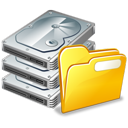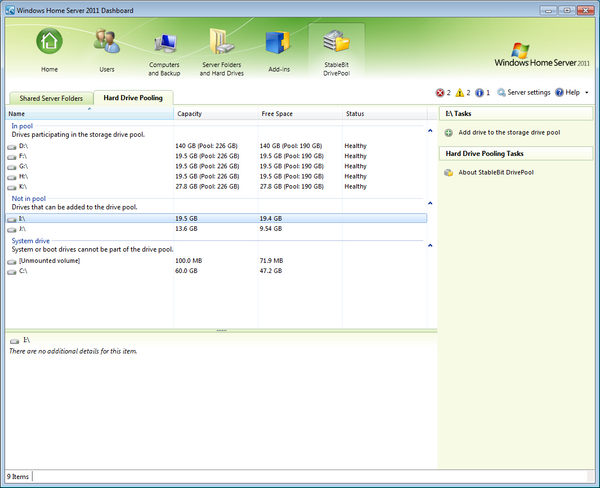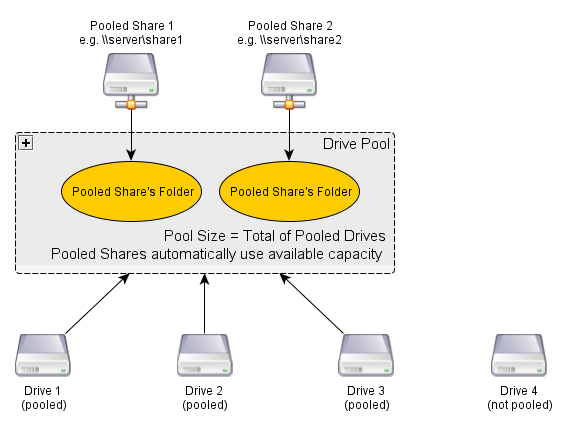Difference between revisions of "StableBit DrivePool"
| Line 5: | Line 5: | ||
'''Current BETA stage: M2 (Milestone 2)''' | '''Current BETA stage: M2 (Milestone 2)''' | ||
| − | '''Build: | + | '''Build: 1917''' |
[[File:info_16.png]] [http://forum.covecube.com/categories/stablebit-drivepool Visit the StableBit DrivePool discussion forum] | [[File:info_16.png]] [http://forum.covecube.com/categories/stablebit-drivepool Visit the StableBit DrivePool discussion forum] | ||
| Line 52: | Line 52: | ||
[[File:download.png]] | [[File:download.png]] | ||
| − | Download the latest version: [http://dl.covecube.com/DrivePool/beta/download/StableBit.DrivePool_1.0.0. | + | Download the latest version: [http://dl.covecube.com/DrivePool/beta/download/StableBit.DrivePool_1.0.0.1917_BETA.wssx StableBit.DrivePool_1.0.0.1917_BETA.wssx] |
| − | |||
| − | SHA1: '' | + | SHA1: ''286272514d54ff91253be740c121e1543bd64ceb'' |
Change log: [http://stablebit.com/Content/Changes/DrivePool/changes.txt View changes.txt] | Change log: [http://stablebit.com/Content/Changes/DrivePool/changes.txt View changes.txt] | ||
Revision as of 00:40, 30 June 2011
StableBit DrivePool is an add-in for the Windows Home Server 2011
Current BETA stage: M2 (Milestone 2)
Build: 1917
![]() Visit the StableBit DrivePool discussion forum
Visit the StableBit DrivePool discussion forum
Screenshot
Features
- Combine all your hard drives into one big storage pool (except the system drive with the OS).
- Add and remove drives from the pool at any time without re-partitioning or manually moving folders.
- Create duplicated folders on the storage drive pool that are protected against single drive failure. If a drive fails on which a duplicated file was stored, the contents of that file will remain readable even without the drive.
- All your data is stored in standard NTFS files. You can always access your files even if the Windows Home Server completely crashes or this add-in can't be used.
How it works
(Credit: Shane)
Blog posts
BETA
StableBit DrivePool is a BETA and has the potential for bugs. Because of the nature of this add-in there is potential for data loss. Only serious testers should consider downloading and installing the current BETA builds.
Your data integrity can be compromised with this BETA build. Use at your own risk, and only with non-essential data.
System Requirements
- Windows Home Server 2011 (or Windows Home Server 2011 RC)
Performance
The current BETAs are not optimized for performance, so you can expect some slowness. However, it should perform well enough to stream HD video content.
Download / Install
Download the latest version: StableBit.DrivePool_1.0.0.1917_BETA.wssx
SHA1: 286272514d54ff91253be740c121e1543bd64ceb
Change log: View changes.txt
Upgrading
Upgrading to a newer build is simple.
- Install the new version.
- Reboot the Server if told to.
Your pooled data will not be deleted by the upgrade.
Upgrading from BETA M1 to M2
StableBit DrivePool BETA M2 is now aware of foreign disks. When you upgrade a M1 build to a M2 build, all your pooled drives with data on them will be shown as Unhealthy in the Windows Home Server dashboard. This is perfectly normal. Just select each disk and run the foreign disk wizard from the task list on the right. This will check your disks to ensure that file duplication is handled properly and mark your disks Healthy.
Troubleshooting and reporting bugs
Send us a message: http://stablebit.com/contact
StableBit DrivePool come with a large set of diagnostic tools built in in order to make troubleshooting and resolving problems easier. If you encounter a problem using DrivePool, depending on the nature of the problem you may want to employ a particular troubleshooting method.
We encourage everyone to participate in the BETA and report issues that they encounter by following the instructions outlined below.
Here are the various ways to troubleshoot StableBit DrivePool and report problems:
Sanity Check
![]() If you're not sure if DrivePool is running, follow these instructions.
If you're not sure if DrivePool is running, follow these instructions.
When to use
If it just doesn't seem to be working at all, take a look at this.
This will teach you how to perform a basic sanity check to make sure that DrivePool is functioning.
Error Reports / Event logs
![]() If DrivePool refuses to start or the Dashboard does not list any drives and folders, follow these instructions on how to collect error reports and submit them to StableBit support for assistance.
If DrivePool refuses to start or the Dashboard does not list any drives and folders, follow these instructions on how to collect error reports and submit them to StableBit support for assistance.
When to use
You're sure that StableBit DrivePool is not running, now you want to submit an error report.
Error reports are written when DrivePool encounters exceptional conditions that prevent it from functioning properly. If such a condition occurs then DrivePool writes out an error report file and issues a windows event log entry.
I/O Errors (errors reading or writing)
![]() If you're having trouble copying files, opening files or using a particular application with the pool, follow these instructions to collect detailed I/O logs and submit them to StableBit support for examination.
If you're having trouble copying files, opening files or using a particular application with the pool, follow these instructions to collect detailed I/O logs and submit them to StableBit support for examination.
When to use
StableBit DrivePool is running, but you're having trouble putting data onto the pool, or reading data from the pool. Or perhaps some program refuses to work with DrivePool.
DrivePool uses the high performance Event Tracing for Windows logger in the kernel driver to collect detailed trace data on every I/O operation leading up to your error. This will show you how to properly collect this data.
System Crash
![]() If your system has a blue screen and it's possible that DrivePool is the cause, then please submit a memory dump file for examination.
If your system has a blue screen and it's possible that DrivePool is the cause, then please submit a memory dump file for examination.
When to use
StableBit DrivePool is installed and you experience a blue screen.
Windows can be configured to collect a full kernel memory dump in case of a blue screen. These dumps should be sent to StableBit support for analysis. We look at every single dump sent.
Steps you can take
- StableBit DrivePool Clean Re-install - Use this procedure to completely uninstall DrivePool and install a fresh new copy.


